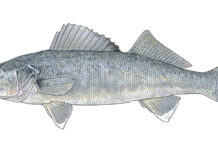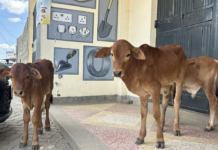I think most would agree this winter has been one to remember. I heard an interesting radio program where the guest mentioned that for those of us under age 40 , this is probably the first “winter” we have ever experienced.
Not sure about you all, but I thought those winters with lows in the 20s and highs near 40 were pretty tough!
Those mild winters often presented challenges of their own, we could address them while wearing fewer layers of clothes, but they were still challenges.
Personally, I devote days with uncomfortable weather conditions to get caught up on bookwork and plans for the coming days and weeks. While attention to outdoor chores has been narrowed due to poor weather conditions, I have been able to complete bookwork and develop plans for the spring.
Overlooked
Often times we are so consumed with winter chores and completing tasks on those mild winter days, we lose sight of the calendar. Too many times we are reacting to the calendar and, unfortunately, that lack of planning comes at the expense of our hay and pasture ground.
When we think about how much money good quality pasture and forages could save us, maybe an afternoon of planning is not a bad idea.
Weed pressure
Think back to fall scouting or making that last forage cutting before fall. Do you remember any areas where weed pressure has reduced the stand of the forage?
Or places in the pasture where the livestock had grazed everything down, with the exception of those unpalatable weeds? Spring is a good time to remedy that problem before they get out of hand.
Which weeds?
Before we decide how to tackle the problem, it is a good idea to properly identify all weeds you desire to treat, along with understanding the life cycle of the plant (annual, perennial, etc.). Each one of those life cycles requires a different treatment strategy for maximum effectiveness.
Some producers might think those weeds with poor palatability in pasture ground do not cause enough of a problem to justify treatment. In some cases of limited weed pressure, herbicide treatments may not be required, but a high mowing before seed head development could be management enough.
It all goes back to the grower’s understanding of the weeds he/she is dealing with, and the amount of pressure the pasture or forage crop is receiving from the presence of the weeds.
It is also important to understand the possibility that some of those weeds present could be toxic to certain species of livestock.
Quality lowered
In the case of forage crops ,significant weed pressure that is baled or grazed will often lower overall quality of the forage in terms of decreased protein content, feed digestibility. In extreme cases, too much of a poor quality food source can cause the livestock to discontinue feeding.
Plan of action
Depending on the situation, there are numerous cultural or mechanical practices that may be effective.
Mowing can keep weeds from out-competing desirable plants around them. Mowing should always be done while the weeds are between 8 and 10 inches tall, or before the plant starts to develop a seed head.
In some cases, you may be able to introduce different species of livestock that may be able to tolerate and digest undesirable plants. There have been multiple studies showing how grazing livestock such as goats can help reduce the population of weeds in a pasture.
Getting stand established
Most of the “good production practices” we encourage for corn and soybean production will also apply to establishing a quality forage crop.
When planting a crop, we want to make sure we have updated soil nutrient tests and have correctly fertilized depending on the crop we wish to grow.
A well-prepared seedbed with good seed-to-soil contact with adequate soil moisture will aid in germination and get the crop off to a good start.
Proper seedbed preparation and burndown of existing weeds will give the planted crop a favorable environment for establishment.
Take the opportunity to stay warm on one of these bitterly cold days and plan for the future of your pastures. A little planning now can set you up for high quality forage and pasture throughout the year.
As always, we invite you to contact your local OSU Extension office for more information and help to answer any questions you may have.












